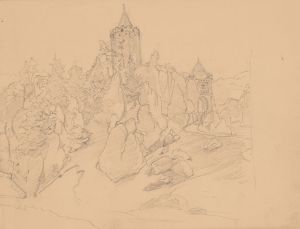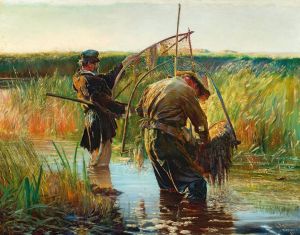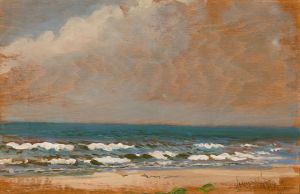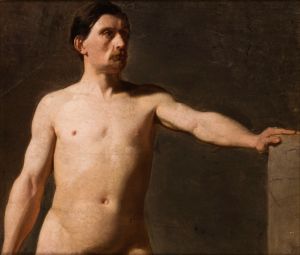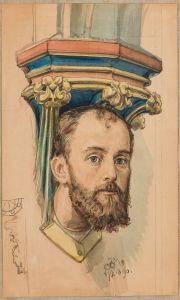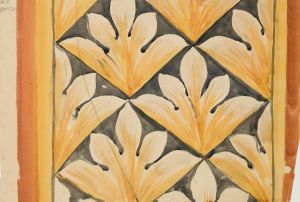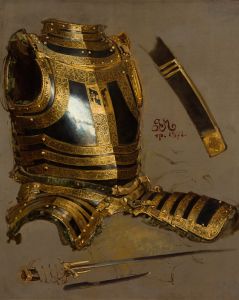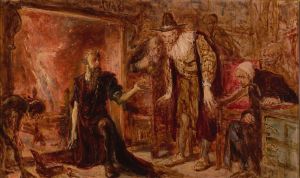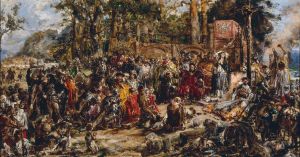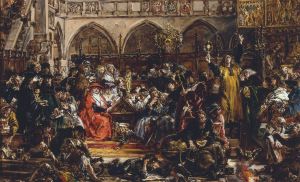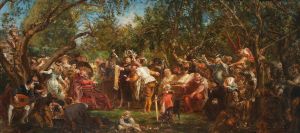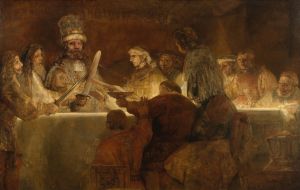
Polonia 1863
A hand-painted replica of Jan Matejko’s masterpiece Polonia 1863, meticulously crafted by professional artists to capture the true essence of the original. Each piece is created with museum-quality canvas and rare mineral pigments, carefully painted by experienced artists with delicate brushstrokes and rich, layered colors to perfectly recreate the texture of the original artwork. Unlike machine-printed reproductions, this hand-painted version brings the painting to life, infused with the artist’s emotions and skill in every stroke. Whether for personal collection or home decoration, it instantly elevates the artistic atmosphere of any space.
"Polonia 1863" is a painting by the renowned Polish artist Jan Matejko, created in 1864. This artwork is a significant historical piece that reflects the socio-political climate of Poland during the January Uprising of 1863, a period of insurrection against the Russian Empire's rule over the Polish-Lithuanian Commonwealth territories.
Jan Matejko, born in 1838, was a prominent figure in Polish art, known for his historical paintings that often depicted pivotal moments in Polish history. His works are characterized by their detailed representation and historical accuracy, capturing the essence of Polish national identity and pride. "Polonia 1863" is no exception, as it embodies the spirit of resistance and the struggle for independence that defined the January Uprising.
The January Uprising began in January 1863 and lasted until the autumn of 1864. It was primarily a response to the oppressive policies of the Russian Empire, which sought to suppress Polish culture and autonomy. The uprising was marked by numerous battles and skirmishes, with Polish insurgents fighting against the better-equipped Russian forces. Despite the initial enthusiasm and support from various segments of Polish society, the uprising ultimately failed due to a lack of international support and internal divisions.
"Polonia 1863" captures the aftermath of a battle, portraying the somber and poignant reality faced by the Polish people. The painting features allegorical elements, with the central figure of Polonia, a personification of Poland, symbolizing the nation's suffering and resilience. She is depicted in chains, representing the subjugation of Poland under foreign rule. The background of the painting includes scenes of destruction and despair, further emphasizing the dire situation faced by the insurgents and the Polish populace.
Matejko's use of color and composition in "Polonia 1863" is deliberate and evocative. The dark and muted tones convey a sense of mourning and loss, while the detailed expressions of the figures reflect the emotional weight of the historical moment. The painting serves as both a tribute to the bravery of the Polish insurgents and a reminder of the harsh realities of their struggle.
"Polonia 1863" is housed in the collection of the National Museum in Kraków, Poland. It remains an important cultural artifact, offering insight into the historical context of the January Uprising and the enduring spirit of the Polish people. Matejko's work continues to be celebrated for its artistic merit and its role in preserving Polish history and identity.
Through "Polonia 1863," Jan Matejko not only documented a critical event in Polish history but also contributed to the broader narrative of national resistance and the quest for sovereignty. His painting stands as a testament to the resilience of a nation and the enduring power of art to capture and convey the complexities of historical events.






